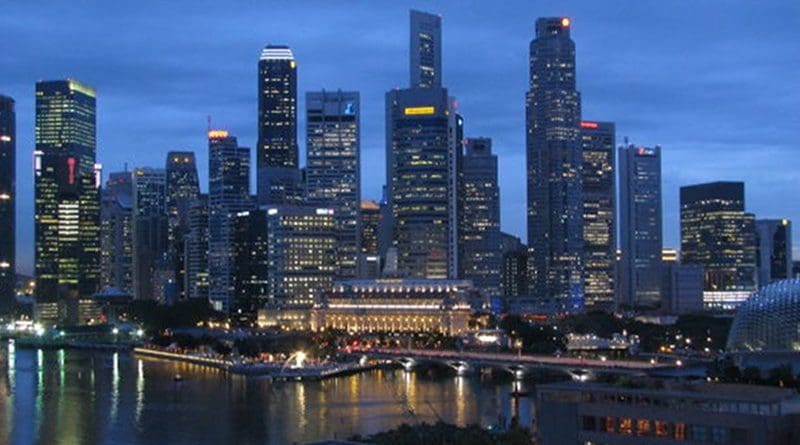Singapore: A Model For Third-World-Countries – OpEd
By Irfan Khan*
Many times in a recent speech, Pakistan’s Prime Minister Imran Khan expressed his hope for emulating China and Malaysia to make a robust shift from third world country to a developing Pakistan. I thought, it worthwhile to review the economical, educational, political and social growth of the three countries, Singapore, China and Malaysia. In this article, I portray the development trajectory of Singapore and will cover China and Malaysia in subsequent articles.
Singapore — officially Republic of Singapore — got independence from UK in 1963 and was merged to Malaysia by British. But it was separated due to ideological differences and became a sovereign nation in 1965. Despite of being in turmoil and a lack of natural resources at an early stage, Singapore turned into the robust, developed Asian tiger economy. And now it is a global hub for education, entertainment, capital, innovation, technology, transport, tourism and trade.
Singapore follows the Westminster parliamentary form of governance structure. The state constitution established democracy as the political system. The chief power owned to the Cabinet headed by Prime Minister. The legislative structure is based on English laws. Singapore judicial system is considered one of the most reliable in Asia.
Corruption: Singapore has been consistently marked is one of the least-corrupt countries by Transparency International. The whole credit goes to a strong government that always is focusing on meritocracy and good governance and hence it is the grassroots behind political stability and economic growth.
Rule of Law: The 2011, World Justice Project’s Rule of Law Index declared Singapore as a country blessed with highly order and security, corruption-free and effective criminal justice, among top countries. But mysteriously, freedom of speech and freedom of assembly was linked to Police administration’s permission and a specific area (speakers corner) is devoted for such public activities.
Economy: The robust economy growth made Singapore an Asian Tiger very similar to Hong Kong, South Korea and Taiwan. The average growth rate was about 6 percent between 1965 and 1995, that had transformed the living standards of populations. Its economy is the most innovative, competitive, dynamical and business friendly. The 2015, Index of Economics Freedom and Ease of Doing Business Index marked Singapore as the top easiest and freest place to do business for the past decades.
The 2106, Economist Intelligence Unit, rated it the world expensive city for consecutive three years. The chief reason behind such a fragile and robust economy is the catching attraction of many foreign investors due to its skilled work force, low tax rates, advance infrastructure and zero-tolerance against corruption. It is second largest investor in India, and 14th largest exporter in the world.
Employment: Singapore is ranked, having the lowest unemployment rates among developed countries. According to the measure between, 2005 and 2014, the unemployment rate remained below 4%. The government consistently provides myriad aid programs to the homeless and needy through the ministry of social and family development. The government, day after day is busing in giving citizens, free money, baby bonus, subsidy for health care, fund to disable, laptops to poor students and much more. This shows, how Singapore believed in individual investment and development. Singapore government, care much foreign workers as foreign workers made 80 percent of construction industry and around 50 percent service industry.
Industry Sector: Singapore is now a leader in the current industry sector, being 3rd largest oil-refining and trade center, world’s largest oil producer and a major hub for ship repairing services. The chief production to be exported, are the refined petroleum, integrated circuits, and computers. Singapore largest companies are in the telecom, transportation, and banking. Information and communication technology is one of the key factors to stable economy.
Education: The schooling model of Singapore has three stages, primary, secondary and pre-university education, with primary stage as compulsory. The curriculum emphasis on the improvement of English, the mother tongue, mathematics and science. Singapore students are much competent in math and science. As the Organization for Economic Cooperation and Development(OECD)’s global school performance ranked its primary and secondary students FIRST, among 76 top counties in 2015, that highlighted the high education standards there.
The developmental trajectory by Singapore in politics, education, industry and economy just briefed above, have consistent grassroots of fair and transparent governance system, which underdeveloped countries must learn to shift themselves in to developing one.
*Irfan Khan, Researcher at QAU, Islamabad and writer at Daily Time, Dunya Blogs, Naya Daur, and EACPE

